Spring along Shoal Creek – March
April 14, 2021 | By Shoal Creek Conservancy
Walking the creek this past month and seeing plants waking from winter dormancy has been a grounding, reassuring experience after an unusual year that was capped off by extreme freezing weather at the end of winter. Seasons continue to pass and our native plants have largely been budding and blooming without missing a beat.
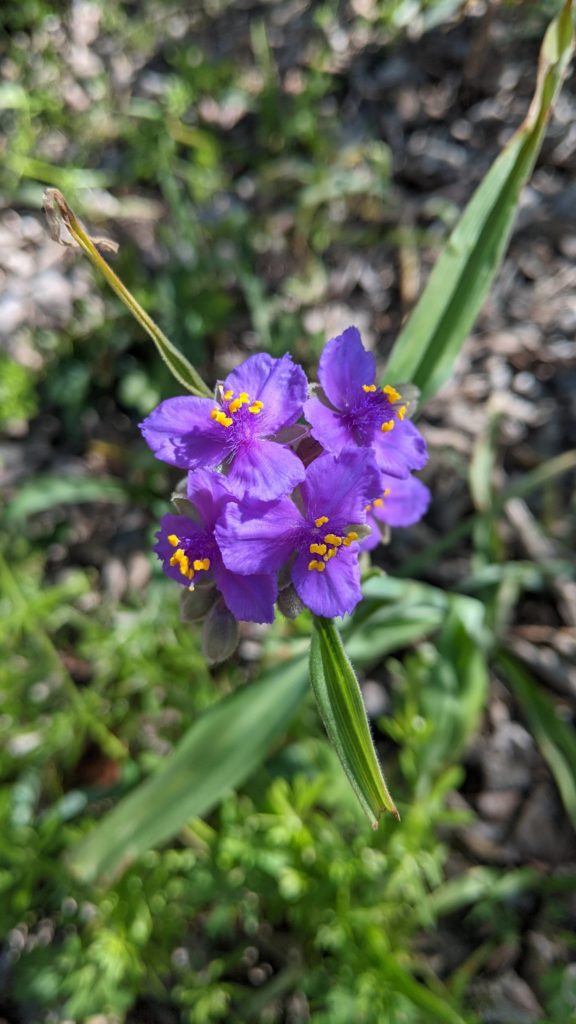
Spiderwort (Tradescantia species) was one of the first to bloom in early March, and its blossoms are just beginning to go to seed a month later. Spiderwort is a native perennial whose flowers and leaves are edible.
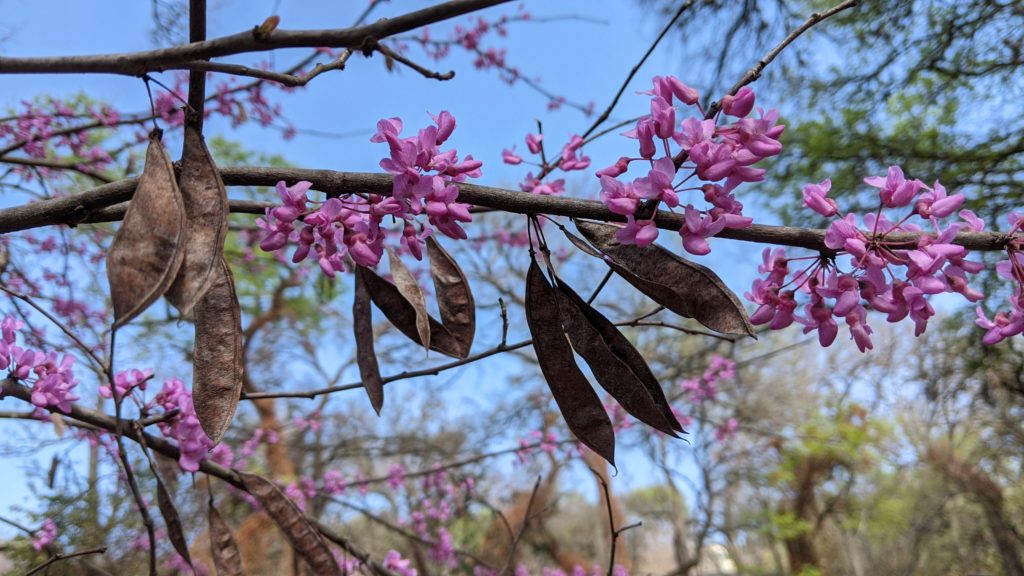
The flowers on this Texas Redbud (Cercis canadensis var. texensis) appear before its leaves and can be seen here alongside last year’s seed pods. The redbud is a small native understory tree whose blooms attract a variety of pollinators, including butterflies, bees, and moths.
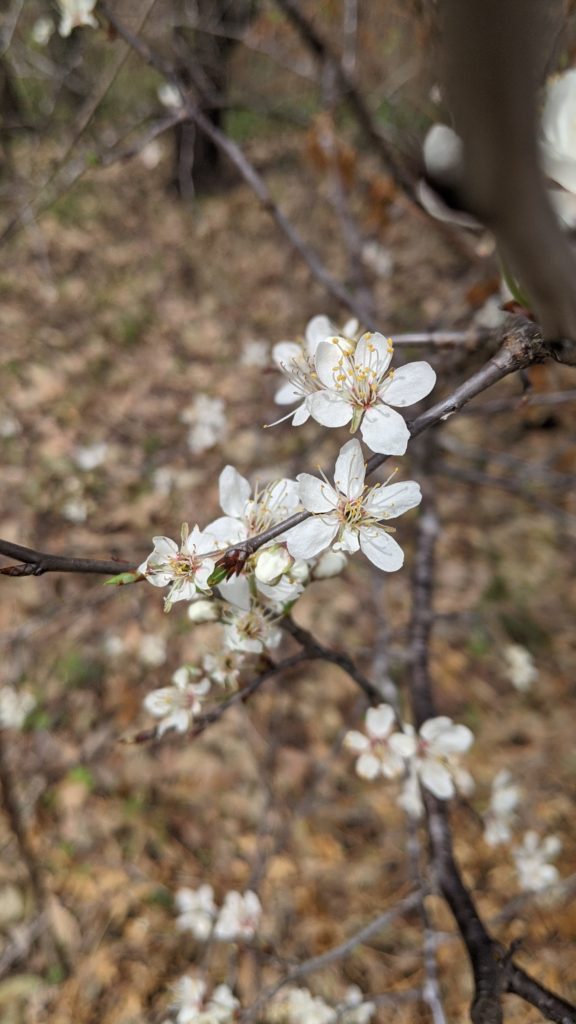
Another early-blooming understory tree whose flowers appear ahead of its leaves is the Mexican Plum (Prunus mexicana). Its fragrant flowers are attractive to bees, and once it develops fruit, it becomes attractive to a variety of birds and mammals as well. Mexican plums are often found in wooded and riparian areas, and there are several along Shoal Creek.

This group of Standing Cypress (Ipomopsis rubra) near the creek isn’t flowering yet, but its delicate, ferny foliage is worth a second look. Keep an eye out for its showy red flower spikes in May and June. This plant’s tubular flowers are a nectar source for hummingbirds.
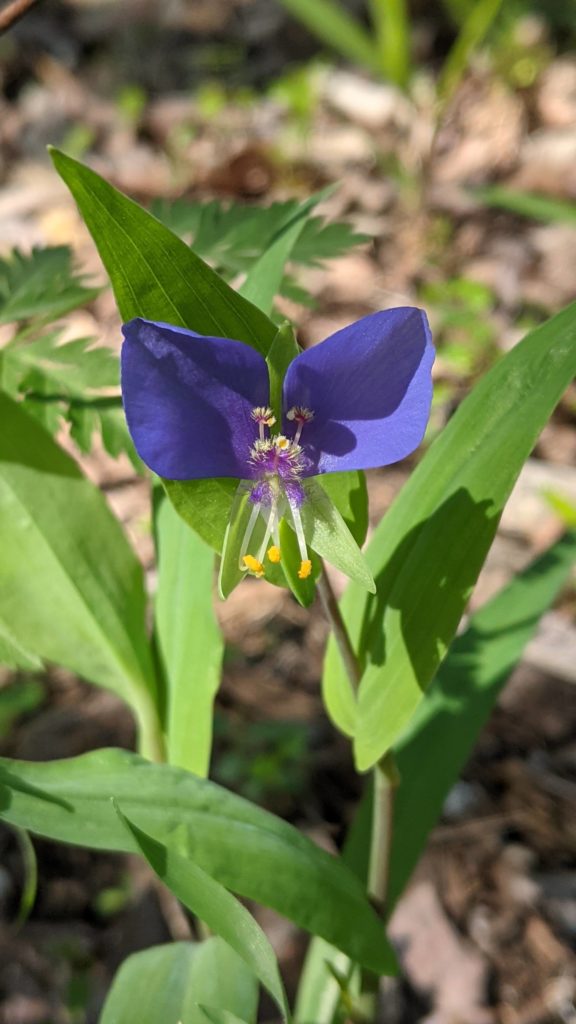
False Dayflower (Tinantia anomala) is a native annual in the same family as Spiderwort, often found in woodlands. Its blooms attract bees, and when it is finished blooming, its nutritious seeds are consumed by a variety of wildlife. While not uncommon in our area, it is native only to parts of Texas and Northern Mexico.
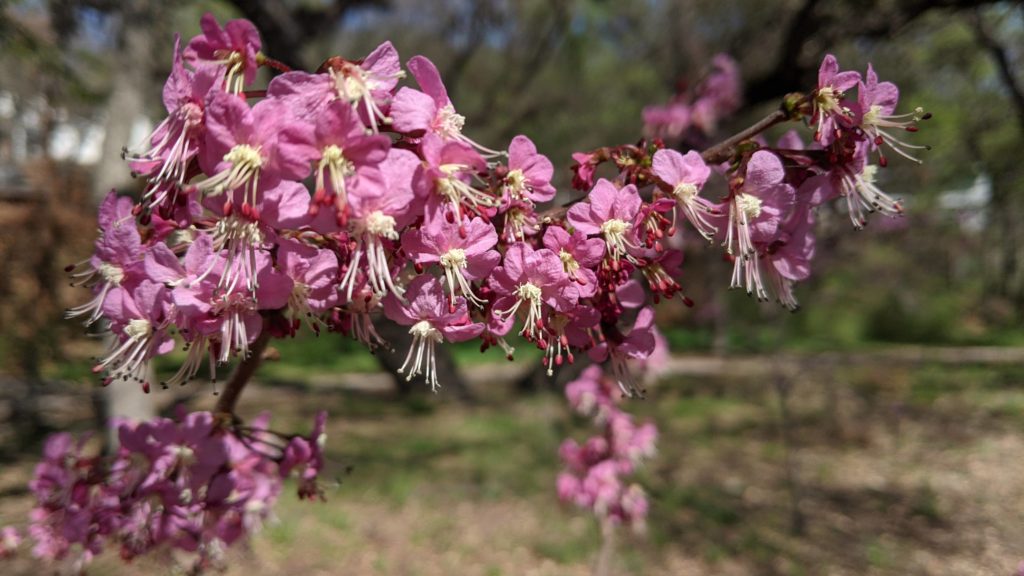
The incredibly showy blooms of the Mexican Buckeye (Ungnadia speciosa) appear in mid-March, in some cases before the leaves appear, and in other cases, alongside new leaves. This small tree is native to Texas, New Mexico, and Northern Mexico. The blossoms attract bees; the unique, tri-lobed seed pods contain large shiny seeds that are mildly toxic.
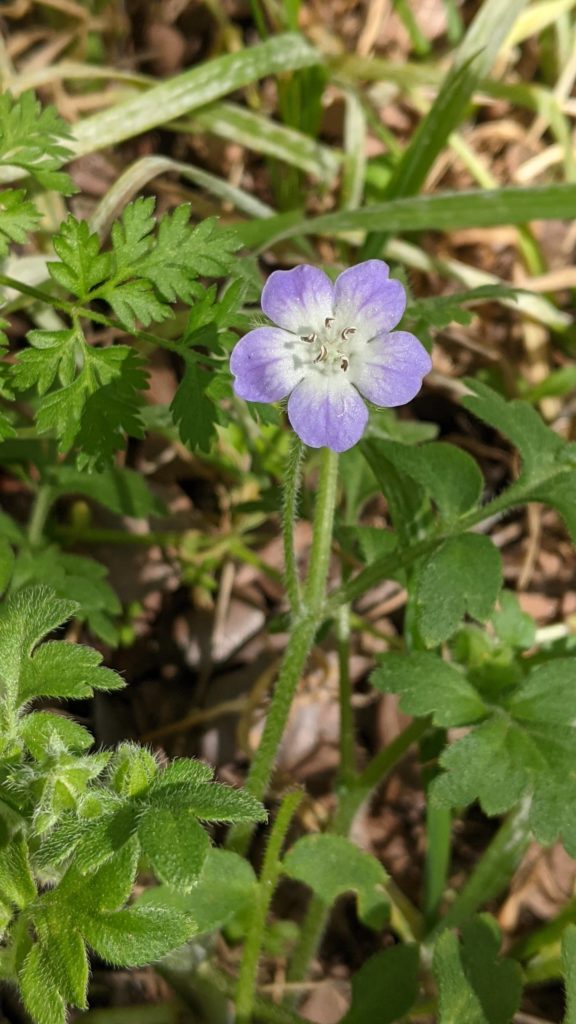
Baby Blue Eyes (Nemophila phacelioides), like many other blue-flowering plants, are excellent bee forage. These native annuals are blooming now, and in some places can be seen carpeting shaded woodlands in pale blue blossoms.
—
Written by Sierra DaSilva, SCC’s Spring 2021 Sustainability Intern
